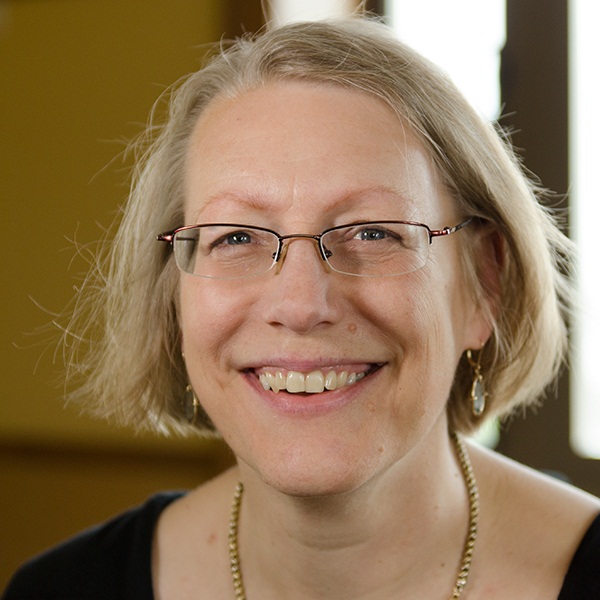- About Archives
- About SAA
- Careers
- Education
- Publications
- Advocacy
- Membership

Professional Experience: Professor /Associate /Assistant, University of Michigan, School of Information, 2000–present. Assistant Professor, University of Pittsburgh, 1997–2000. Graduate Student Research Assistant/Instructor, University of Michigan, 1992–1997. Director, Maryknoll Mission Archives, 1990–1992. Vatican Archives Project Archivist, University of Michigan, 1989–1990. Religious Archives Technical Assistance Project Archivist, 1987–1989. Archivist/Records Manager, Archdiocese of Detroit, 1982–1987.
Education: PhD, 1997 and AMLS, 1982, University of Michigan. AB, Brown, 1980.
Honors: Society of American Archivists: Fellow, 1999; Ernst Posner Award, 2008; with Society of Southwest Archivists, Sister M. Claude Lane Award, 1991; Committee on Institutional Cooperation: Academic Leadership Program Fellow, 2008–2009.
Professional Activities: Society of American Archivists: Communications Technology Working Group, 2011–2012; Ernst Posner Award Subcommittee, 2010; Education Committee, 2004–2009; A-CENSUS Steering Committee, 2004–2005; Education Office Strategic Planning Task Force, 2002–2004 (Chair); Master of Archival Studies Guidelines Revision Task Force, 1999–2001; The American Archivist, Editorial Board, 1997–2004; Host Committee, Pittsburgh, 1999; Committee on Education and Professional Development, 1995–1997; Chair, 1996–1997; Council, 1992–1995; Executive Committee, 1994–1995; Committee on International Archival Affairs, 1990–1992. Midwest Archives Conference: Conference Chairperson, May 1989. Archival Education and Research Initiative (Co-PI): 2009–present. OCLC Research: Social Metadata Working Group, 2009–2012. Association of Research Libraries: Sustaining Digitized Special Collections, Advisory Board, 2011–present. Archival Science: Editor, 2006–present.
* * *
Question posed by Nominating Committee: How well positioned do you think SAA is to serve the needs of its members in the 21st century? What are its key strengths and weakness? As President, what would you do to address those weaknesses?
The Society of American Archivists is in a good position to address members’ needs; however, the process of ascertaining and addressing those needs requires commitment to continual assessment as well as external monitoring of the environment to anticipate future needs. There are several key areas of member needs: continuing education (broadly defined), ensuring that SAA is affordable and provides value for its members, and pressing an archival agenda that supports the profession as a whole as well as individual members.
SAA has two key strengths that make it possible not just to maintain the status quo but also move the organization and its membership forward. The first is a sound financial footing. Through professionalization of the organization’s financial systems, the creation of a reserve fund, and the development of the SAA Foundation, SAA has a strong and sustainable base. The second major strength is SAA’s members. I am continually impressed by the SAA membership. The leadership continually renews itself, as new generations of leaders emerge and mentor newer generations. Members have been at the forefront of recent initiatives, such as the push toward more social responsibility, diversity, and rethinking the annual meeting. Membership initiated initiatives are essential to keep SAA relevant.
These strengths are also a source of weakness. Stability leads to deliberative (sometime too deliberative) action at a time when the membership wants innovation and change. To address this weakness, SAA leadership needs to be more open to questioning dogma. A great recent example is the annual meeting. Meeting logistics, such as a single hotel, that were not questioned for decades are now seen as changeable. We need to identify other SAA activities and structures that we can similarly rethink to better serve the membership.
When I entered the archival profession, it was approximately 50/50 men to women. SAA managed this transition well. However, as a society we are now facing even greater demographic changes. SAA has made significant efforts to become more welcoming to diverse individuals, but these have not been as successful as they could be. It is unclear which efforts should be institutionalized and which should retain temporary status. At the same time, SAA has continually had a hard time incorporating new members. In looking at the results of 2012 Membership survey, I realized how much the average respondent was unlike me; 56% of the respondents joined SAA in the past 6 years. SAA needs to better integrate new members, the lifeblood of the organization. The creation of SNAP has been a positive step but we also need new member activities outside the annual meeting (perhaps a free webinar on the inner working of SAA!) and to better support Roundtables and Sections, which are the traditional means through which members become involved in SAA. SAA just completed a Member Survey to assess needs, more light-weight and agile polls using multiple input channels (e.g., website, blogs, Twitter) would capture more immediate member needs.